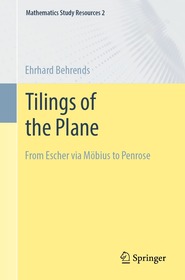
- Publisher's listprice EUR 64.19
-
26 622 Ft (25 355 Ft + 5% VAT)
The price is estimated because at the time of ordering we do not know what conversion rates will apply to HUF / product currency when the book arrives. In case HUF is weaker, the price increases slightly, in case HUF is stronger, the price goes lower slightly.
- Discount 12% (cc. 3 195 Ft off)
- Discounted price 23 428 Ft (22 312 Ft + 5% VAT)
Subcribe now and take benefit of a favourable price.
Subscribe
26 622 Ft

Availability
printed on demand
Why don't you give exact delivery time?
Delivery time is estimated on our previous experiences. We give estimations only, because we order from outside Hungary, and the delivery time mainly depends on how quickly the publisher supplies the book. Faster or slower deliveries both happen, but we do our best to supply as quickly as possible.
Product details:
- Edition number 1st ed. 2022
- Publisher Springer Fachmedien Wiesbaden
- Date of Publication 13 November 2022
- Number of Volumes 1 pieces, Book
- ISBN 9783658388096
- Binding Paperback
- No. of pages283 pages
- Size 235x155 mm
- Weight 456 g
- Language English
- Illustrations XI, 283 p. 313 illus., 303 illus. in color. Illustrations, black & white 732
Categories
Long description:
The aim of the book is to study symmetries and tesselation, which have long interested artists and mathematicians. Famous examples are the works created by the Arabs in the Alhambra and the paintings of the Dutch painter Maurits Escher. Mathematicians did not take up the subject intensively until the 19th century. In the process, the visualisation of mathematical relationships leads to very appealing images. Three approaches are described in this book.
In Part I, it is shown that there are 17 principally different possibilities of tesselation of the plane, the so-called 'plane crystal groups'. Complementary to this, ideas of Harald Heesch are described, who showed how these theoretical results can be put into practice: He gave a catalogue of 28 procedures that one can use creatively oneself – following in the footsteps of Escher, so to speak – to create artistically sophisticated tesselation.
In the corresponding investigations forthe complex plane in Part II, movements are replaced by bijective holomorphic mappings. This leads into the theory of groups of Möbius transformations: Kleinian groups, Schottky groups, etc. There are also interesting connections to hyperbolic geometry.
Finally, in Part III, a third aspect of the subject is treated, the Penrose tesselation. This concerns results from the seventies, when easily describable and provably non-periodic parquetisations of the plane were given for the first time.
Table of Contents:
Part I: Escher seen over his shoulders.- Part II: Furniture transformations.- Part III: Penrose tesselation.
More



